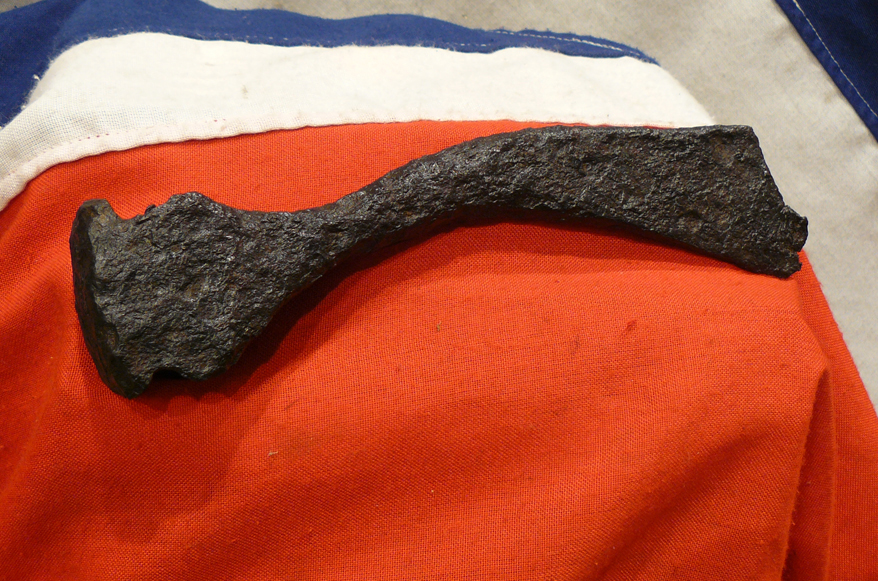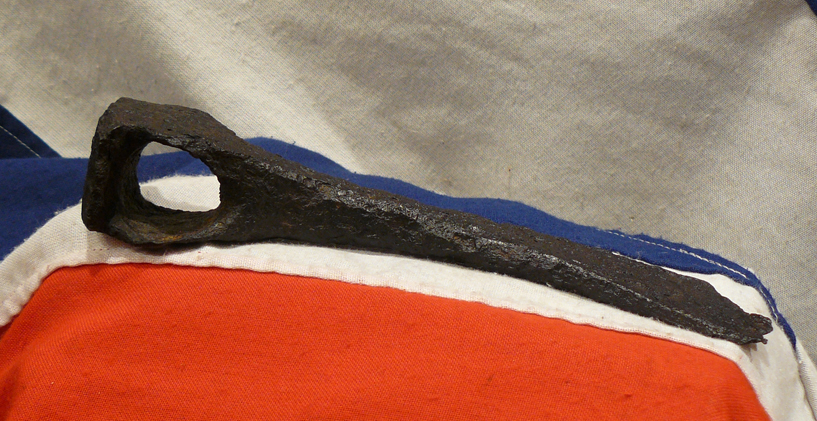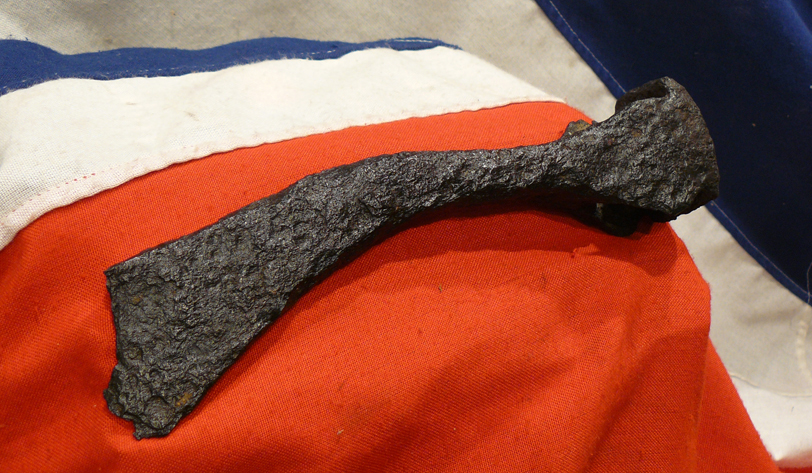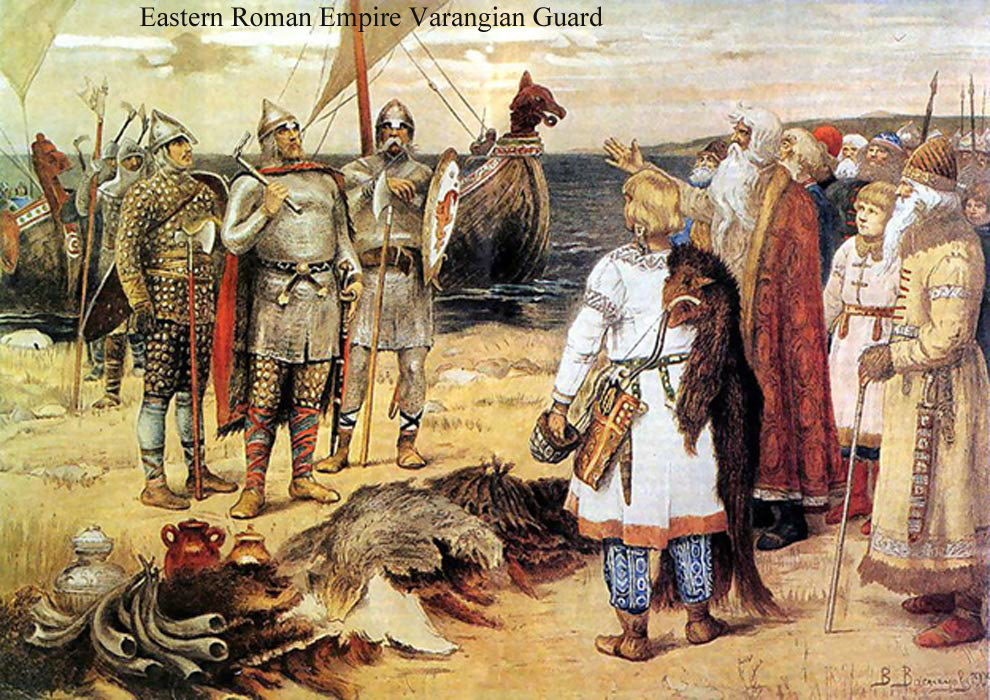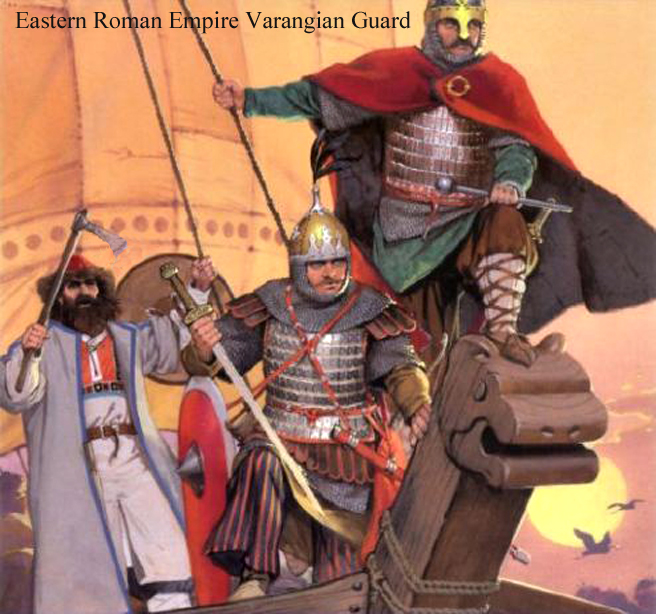An Eastern Roman Empire Battle War Axe 4th - 10th Cent. A.D.
This is a typical axe for the Eastern Roman Empire legionary and warrior. From the time of Emperor Constantine 'The Great' and used to The beginning of Byzantium period.
The Battle of Cibalae was fought in 316 between the two Roman emperors Constantine I (r. 306–337) and Licinius (r. 308–324). The site of the battle, near the town of Cibalae (now Vinkovci, Croatia) in the Roman province of Pannonia Secunda, was approximately 350 kilometers within the territory of Licinius. Constantine won a resounding victory, despite being outnumbered.
The opposing armies met on the plain between the rivers Sava and Drava near the town of Cibalae (Vinkovci). The battle lasted all day. The battle opened with Constantine's forces arrayed in a defile adjacent to mountain slopes. The army of Licinius was stationed on lower ground nearer the town of Cibalae, Licinius took care to secure his flanks. As the infantry of Constantine needed to move forward through broken ground, the cavalry was thrown out ahead, to act as a screen. Constantine moved his formation down on to the more open ground and advanced against the awaiting Licinians. Following a period of skirmishing and intense missile fire at a distance, the opposing main bodies of infantry met in close combat and fierce hand-to-hand fighting ensued. This battle of attrition was ended, late in the day, when Constantine personally led a cavalry charge from the right wing of his army. The charge was decisive, Licinius' ranks were broken. As many as 20,000 of Licinius' troops were killed in the hard-fought battle. The surviving cavalry of the defeated army accompanied Licinius when he fled the field under the cover of darkness
It is a matter of debate when the Roman Empire officially ended and transformed into the Byzantine Empire. Most scholars accept that it did not happen at one time, but that it was a slow process; thus, late Roman history overlaps with early Byzantine history. Constantine I (the Great) is usually held to be the founder of the Byzantine Empire. He was responsible for several major changes that would help create a Byzantine culture distinct from the Roman past.
As emperor, Constantine enacted many administrative, financial, social, and military reforms to strengthen the empire. The government was restructured and civil and military authority separated. A new gold coin, the solidus, was introduced to combat inflation. It would become the standard for Byzantine and European currencies for more than a thousand years. As the first Roman emperor to claim conversion to Christianity, Constantine played an influential role in the development of Christianity as the religion of the empire. In military matters, the Roman army was reorganised to consist of mobile field units and garrison soldiers capable of countering internal threats and barbarian invasions. Constantine pursued successful campaigns against the tribes on the Roman frontiers the Franks, the Alamanni, the Goths, and the Sarmatians, and even resettled territories abandoned by his predecessors during the turmoil of the previous century.
The age of Constantine marked a distinct epoch in the history of the Roman Empire. He built a new imperial residence at Byzantium and renamed the city Constantinople after himself (the laudatory epithet of New Rome came later, and was never an official title). It would later become the capital of the empire for over one thousand years; for this reason the later Eastern Empire would come to be known as the Byzantine Empire. His more immediate political legacy was that, in leaving the empire to his sons, he replaced Diocletian’s tetrarchy (government where power is divided among four individuals) with the principle of dynastic succession. His reputation flourished during the lifetime of his children, and for centuries after his reign. The medieval church upheld him as a paragon of virtue, while secular rulers invoked him as a prototype, a point of reference, and the symbol of imperial legitimacy and identity. The Varangian Guard was an elite unit of the Byzantine Army, whose members served as personal bodyguards to the Byzantine Emperors. The Varangian Guard was known for being primarily composed of recruits from northern Europe, including Norsemen from Scandinavia and Anglo-Saxons from England. The recruitment of distant foreigners from outside Byzantium to serve as the emperor's personal guard was pursued as a deliberate policy, as they lacked local political loyalties and could be counted upon to suppress revolts by disloyal Byzantine factions. This axes form and evolution; A somewhat similar correspondent to the type 1 of the classification made by the Kirpichnikov for the early Russian axes. Particularly, it seems akin to the specimens of Goroditsche and Opanowitschi, dated in the turn of 10th - 11th centuries however, its shape is slightly different, and considering the strong influence of the Roman Armies on the Russian ones in 11th century.
The general Nikephoros Ouranos remembers in his Taktika (56, 4) that small axes were used at the waist of the selected archers of infantry : "You must select proficient archers - the so called psiloi - four thousand. These men must have fifty arrows each in their quivers, two bows, small shields and extra bowstrings. Let them also have swords at the waist, or axes, or slings in their belts".
The axe was inserted in its wooden shaft and fixed to it by means of dilatation of the wood, dampened by water. The Byzantine Empire is the great Greek-language Christian empire that emerged after 395AD from the eastern part of the Roman Empire, Thanks to efficient government and clever diplomacy that divided its many enemies, the empire survived. Much diminished after 1204 AD when it was sacked by Christian Crusaders from the west en route to liberate Jerusalem, it finally fell to the Turks in 1453--indeed its fall is often used to date the end of the Middle Ages. Its capital was Constantinople, built on the site of the Greek colony of Byzantium and which is now known as Istanbul). The center of Orthodox Christianity, it is famous as well for its art and culture. The inhabitants of the empire referred to themselves as 'Romans' and considered themselves as such, the term 'Byzantine' not being used to describe the empire and its peoples until the seventeenth century, but after the seventh century the language of empire changed from Latin to Greek. Almost every iron weapon that has survived today from this era is now in a fully russetted condition, as is this one, because only the swords of kings, that have been preserved in national or Royal collections are today still in a good state and condition.
Code: 22671
975.00 GBP


